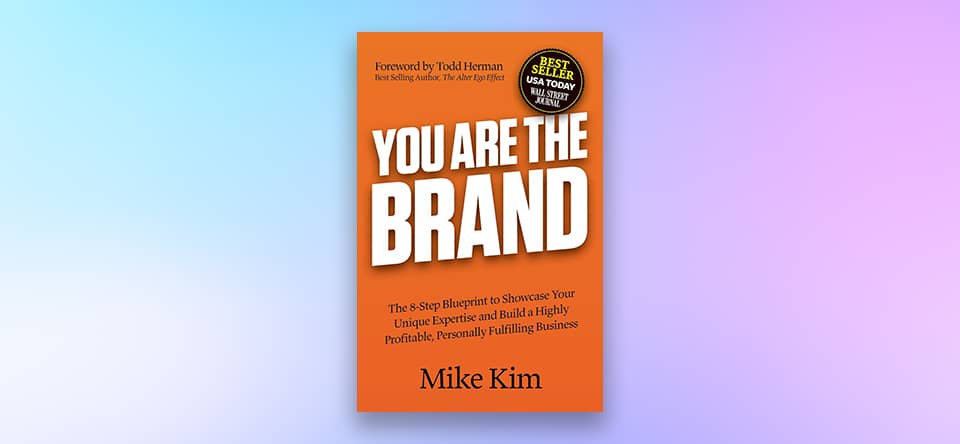We also discuss how to collect convincing client testimonials and whether brand marketing is a waste of resources.
Hi friend and happy Wednesday!
With so many social media platforms and growth channels, startup founders often think they need to do everything at once. But that’s not true.
They did it primarily with referrals. Users got 500MB of free storage for signing up and another 500MB for every friend they invited.
They started producing 500 pieces of content per month. This has led to over 30,000 indexed pages on search engines, 55 million monthly visitors and $687M in revenue in 2024.
Most of their sales came from these posts. The company grew so fast, the founders sold the company for $100 million after just 5 years.
If you want to succeed with your startup, you don’t need to dominate every platform. Just find one that works for you and scale it.
But you won’t discover your best growth channel overnight. You need to explore various strategies and scale the one that shows promise.
Martinez suggests an 8-month timeline:
Patience is key here. Test different strategies, gather data, and double down on what works.
There’s no shortage of SEO advice online. But most of it is generic and doesn’t help you rank or build a strategy.
Here are a few highlights:
With the rise of AI, many question if SEO is still worth the effort. Will people keep using Google?
But here’s the thing. People have been predicting the death of SEO for years. It’s still not dead. And Google still handles 90% of all searches.
Plus, AI models need data to train. You want them to use your data, not your competitors’.
When potential customers search for the “best tools” in your category or comparisons between you and competitors, you want your website to show up first.
You don’t want your competitors to control the narrative.
But don’t be overly salesy. Vandervell suggests talking about how you are different. Not how you’re better.
PostHog recently published an article targeting the keyword “electron analytics.” According to Ahrefs, it gets approximately 30 searches a month and has a 0/100 difficulty score.
PostHog is getting five unique visitors per day on that page. That’s 1,850 visitors a year.
There is no shortage of problems people search for out there. Find the ones your products can help solve and create contents around them.
Many people complain that their “great” content doesn’t rank. But most of the time, their content isn’t really great. It’s boring and unoriginal.
To stand out, go beyond explaining things. AI can do that.
Instead, share your opinion and make a recommendation. Back it up with real evidence. Create content you’d proudly share with friends.
Every company wants to build a strong, recognizable brand. But is brand marketing actually worth the time and money?
“Brand marketing is mostly useless for consumer startups. Startups build a great brand by being successful, finding product market fit and scaling traction, etc. But it’s not a real lever. Let’s not mix up correlation with causation!” writes Chen.
He warns that agencies, consultants, and service providers push brand marketing because it benefits them. Not because it drives real results for startups. “Early startups should opt out of all of this,” he says.
Media coverage, speaking engagements, and PR buzz feel exciting. But it rarely translates into meaningful customer acquisition.
“Anyone who’s been on the homepage of TechCrunch, AngelList, Hacker News, or even in the NYTimes knows that it’s a increase to your dopamine but not so much your customer acquisition 🙂 It’s great for the early days, but you need a lot more to scale.”
And becoming a well-known brand doesn’t necessarily make customer acquisition cheaper.
“If brand marketing helps make acquisition ultimately cheaper, then why does every startup’s paid acquisition become less efficient over time, even as the company becomes more well known? The same arguments apply to startups’ re-engagement efforts.”
For early-stage consumer startups, the priority should be on the basics:
One thing I want to share from the book is Mike’s strategy to collect killer client testimonials. The kind of testimonials that instantly build trust and confidence with your target audience and make them more comfortable purchasing from you.
“All too often, a client testimonial will sound more like a character reference than something that showcases the results you help someone achieve. “Mike is a great guy! We highly recommend him!” are nice words, but they do very little for business. There are no specific results mentioned or details on how results were achieved.
“While your clients mean well, it’s also likely that most are:
“To help collect better client testimonials, I use half-sentences that lead the client down a specific train of thought and bake in the inciting incident. This ensures the responses are based on results and keeps the client from feeling bogged down by heavy writing.
“I recommend creating a simple “testimonial intake form” either online or as a PDF sent via email with the following sentences. Once your client fills in the answers, the natural flow of the sentences allows you to craft a client case study that you can post on your website or use in other marketing materials.
1. Half-sentence on your background: “I am the [title or position] of [organization or company], a company that [what your business is or does]…”
2. Half-sentence on the issue(s) leading you to work with me: “We were overloaded with ideas and needed a roadmap for where we were going…”
3. Half-sentence on reservations about hiring an outside consultant: “We didn’t know what to expect and never worked with a consultant on such a critical issue…”
5. Half-sentence on results from the consultation: “Within a few months, we had a clear marketing strategy on how to launch our product…”
6. Half-sentence on your recommendation: “We absolutely recommend Mike to organizations that need to [your thoughts]…”
“Feel free to take and tweak these for your own use. Keep in mind that even if you have a testimonial intake form, it may be difficult to secure testimonials. There are three other alternatives:
2. You can answer the questions for the client on their behalf and have them approve it.




